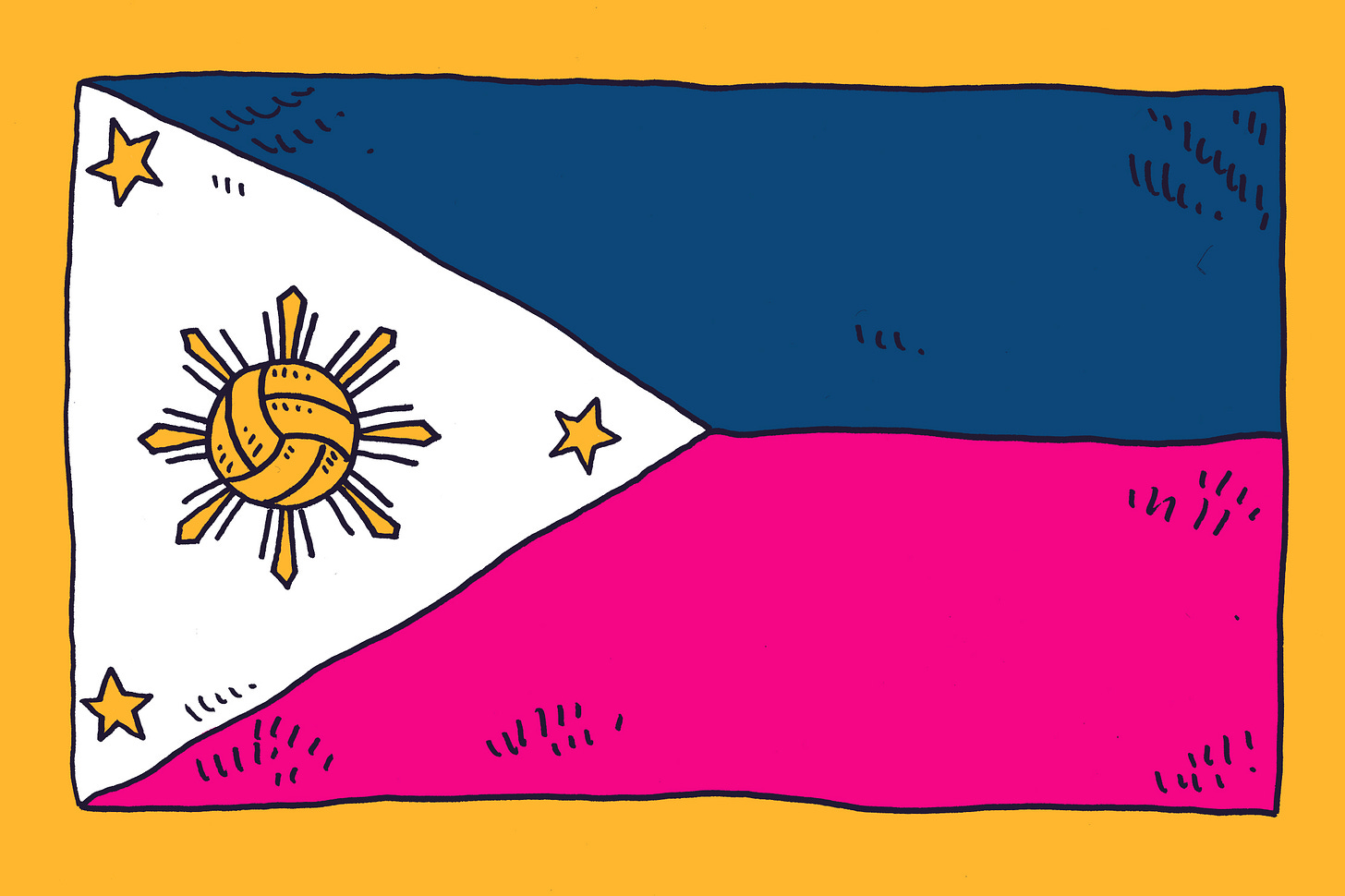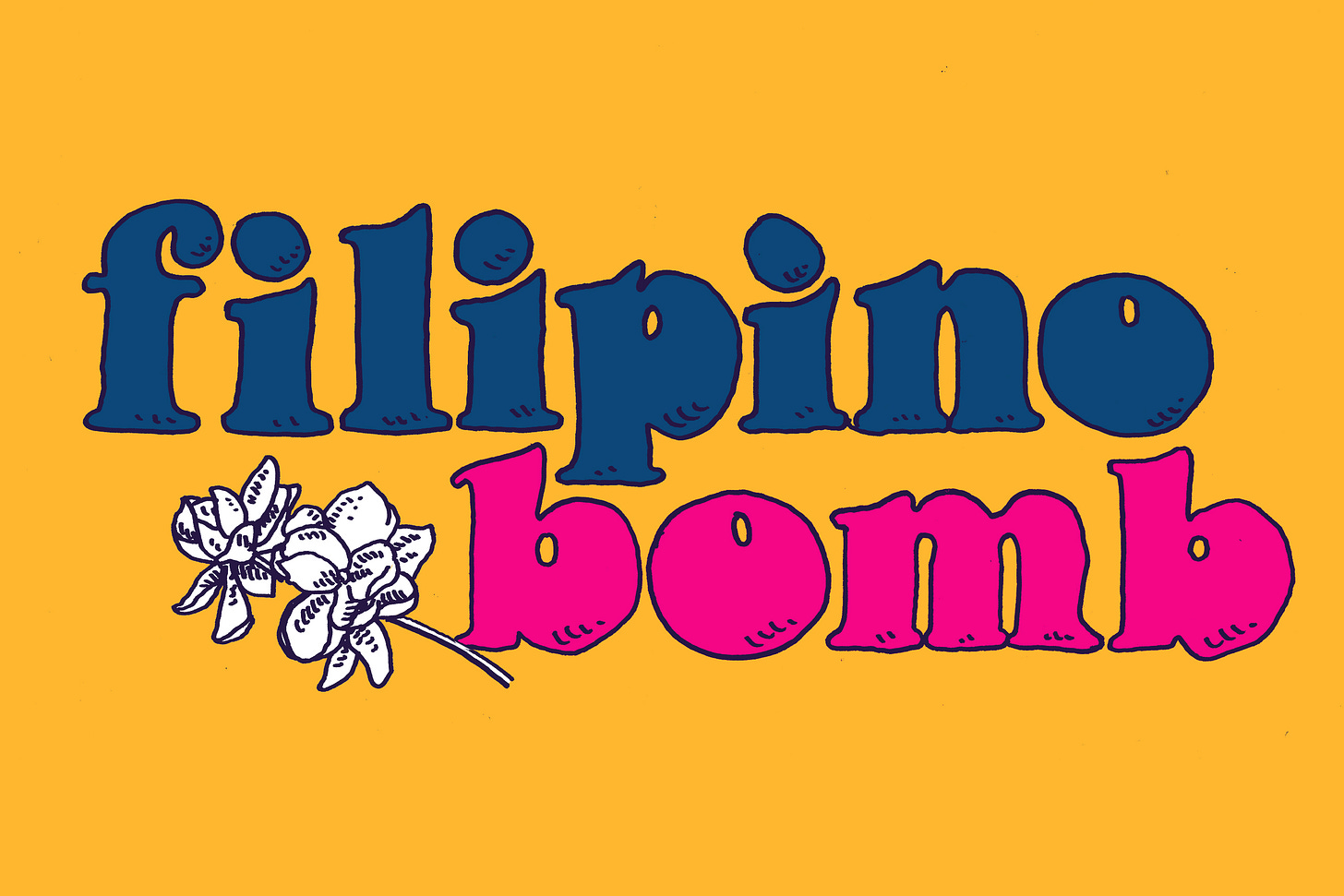The Filipino Bomb
Volleyball was born in Massachusetts, but it had to go around the world to fulfill its destiny.
In the early days of 1910, an American named Elwood Brown landed in Manila. He was 26 years old, and he was a true believer. He was a true believer in sports, and in fair play, and in the institutions that held those values up.
Brown worked for the YMCA -- and in his spare time, he volunteered for the Boy Scouts and the International Olympic Committee. He was in the Philippines to institute a program of physical fitness among the locals. This was in the relatively early stages of American colonial rule over the Philippines, and the country must have seemed like a blank canvas to a go-getter like Elwood Brown.
He got right to work installing an American-style sports infrastructure. He built playgrounds, organized competitions, and even founded the organization that would later transform into the Philippine Olympic Committee. Brown also brought two relatively new sports with him. One of those sports, basketball, remains a fixture in the Philippines. Filipino hoops culture is vibrant, and world renowned. It has been the subject of books and of popular instagram accounts.
The other sport Elwood Brown introduced in the Philippines was volleyball. I did not know this until researching this newsletter, but volleyball -- like basketball -- is an invention of the YMCA. In fact, volleyball was literally designed as an alternative for older athletes who found that basketball involved a little bit too much running

But neither sport was fully formed when Brown landed in Manila. In the case of basketball, the shot clock and the three-point line were decades away. Volleyball was even more raw. For example, the earliest version of the sport was played on a smaller court and allowed for an unlimited number of players on either side of the net.
(Quick aside: it’s wild that sports as ubiquitous as basketball and volleyball were literally just invented by some guys in New England, and then spread across the globe by a religious organization.)
It turned out that people in the Philippines really liked volleyball. It makes sense: volleyball is a fun game. You can play it outside, you can even play it on a beach. Primary sources on this are hard to come by, but it seems as if a vibrant pickup volleyball culture sprang up. The official website of the Philippine Volleyball Federation states that players would string nets across coconut trees and set informal rules: 2 on 2 or 5 on 5 or whatever might work.
This was where the YMCA’s version of volleyball ran into its first problem in the Philippines. It turns out that Filipino volleyball players weren’t necessarily in a rush to destroy their opponents. Teams would simply volley the ball back and forth on their own side of the net for hit after hit after hit after hit until every player touched the ball before returning it. This was honorable and democratic and it was fun for the team with possession -- but it was not so fun for opponents. It was also counterproductive to the YMCA’s mission of instilling a culture of fitness and healthy competition.
And so volleyball’s three-hit limit was born on the beaches of the Philippines.

Filipino volleyball players adjusted quickly. Not long after their chill approach to the sport inspired the three-hit limit, Filipino players figured out how to make the most of those three hits. Instead of just lobbing the ball over the net, why not actually try and win? They developed a new technique. Your opponent may have 15 players on their side of the net...but with this new technique, it wouldn’t matter.
Elwood Brown could not have known it, but the sport he brought to the Philippines was about to change again: Filipino players invented what is now called the set and spike. Use two hands to loft the ball up toward your own side of the net, and watch one of your teammates soar into the air, and then smash the ball down into the ground.
The technique was -- and remains -- devilishly effective. Filipino teams used it to smash all over American soldiers and government officials in tournaments. And soon the foreigners were calling the move the “bomba” and the “Filipino bomb.”
Elwood Brown died young. He suffered a heart attack in 1924 at the age of 41. But before he did, he organized and advocated for regional athletic competitions in the Philippines, South America, and around the world. He addressed the International Olympic Committee three separate times.
Volleyball itself didn’t become an Olympic sport until the 1964 games in Tokyo. Beach volleyball didn’t make its medal sport debut until 1996. The Filipino squads in both sports are still seeking out their first medal. But they certainly deserve a lifetime achievement award.
Related Reading
Here’s a scholarly article on Elwood Brown from The Journal of Olympic History. And here’s the very not official looking but apparently real website for the Philippine Volleyball Federation. And finally, here’s a brief history of volleyball from the official Volleyball Hall of Fame.
Also: if you’re looking for a rabbit hole, it turns out that volleyball highlights on YouTube have a really pleasant, hypnotic quality. We’ll leave you with this spectacularly impressive video of the contemporary Filipino women’s national team winning a very, very long rally.
This has been Sports Stories by Eric Nusbaum (words) and Adam Villacin (art). If you have any questions, comments, or concerns, please reply to this email or contact enusbaum@gmail.com. We’d love to hear from you.
Sports Stories is 100 percent free. If you enjoyed this week’s newsletter, and want to show your appreciation, the best way to do that would be to sign up, share it on social media, or forward it to someone you think might enjoy it too.


